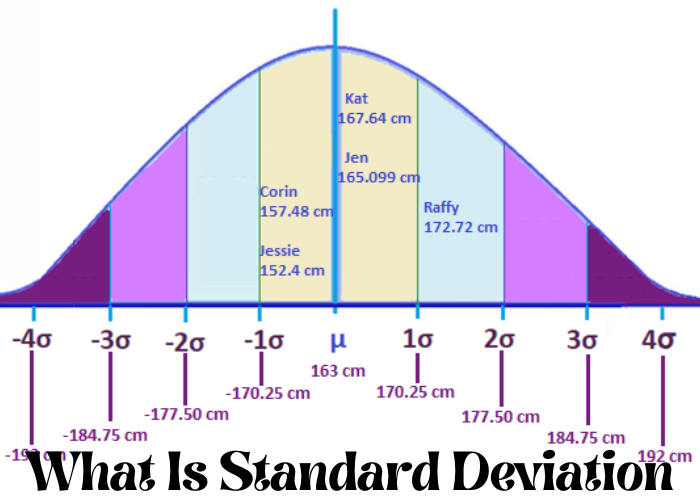What is standard deviation and why is it important? Standard deviation is a statistical measure that calculates the dispersion of data points around the mean. This measure provides valuable insights into how far away individual data points are from the mean, and can be used to identify outliers. Standard deviation is an important tool for educators, as it can help to identify which students are struggling and may need extra support. Additionally, standard deviation can be used to assess changes in student performance over time. By understanding standard deviation, educators can more effectively target areas of improvement for their students.
What Is Standard Deviation and What Does It Measure
Standard deviation is a statistical measure that quantifies the amount of variation in a set of data. It is calculated as the square root of the variance, and is represented by the symbol σ (sigma). Standard deviation is useful for understanding how spread out a set of data is, and can be used to compare different data sets. For example, if two data sets have similar means but different standard deviations, then the data set with the larger standard deviation is more spread out. Standard deviation is also used in many statistical tests, such as the Student’s t-test and ANOVA.
How to Calculate Standard Deviation
Standard deviation is a statistical measure of how spread out a data set is. To calculate it, you first need to find the mean, or average, of the data set. Then, for each data point, subtract the mean and square the result. Next, take the average of all of the squared values. Finally, take the square root of this average to find the standard deviation. The larger the standard deviation, the greater the variation in the data set. Standard deviation can be a useful tool for understanding how a data set is distributed and identify outliers.
The Benefits of Using Standard Deviation in Business and Finance
The benefits of using standard deviation in business and finance are many and varied. For starters, it is a very useful tool for measuring risk. This is because it tells us how much variation there is in a given set of data. This information can then be used to make informed decisions about investments, pricing and other business-related Matters. Standard deviation can also be used to monitor trends over time and to identify outliers. In addition, it can be used as a tool for marketing research. By understanding the standard deviation of certain customer groups, businesses can make more targeted marketing efforts that are more likely to be successful. In short, the benefits of using standard deviation in business and finance are numerous and wide-ranging. As such, it is an essential tool for any business or financial professional.
How to Interpret Standard Deviation Results
How to interpret standard deviation results? In order to understand the results of a study, it is important to look at the mean, median, and mode. However, these measures of central tendency can be misleading. The standard deviation is a measure of variability that can give a more accurate picture of the data. A low standard deviation means that the data points are concentrated close to the mean, while a high standard deviation indicates that the data is more spread out. When interpreting the results of a study, it is important to look at both the mean and the standard deviation. This will give you a more complete picture of the data and allow you to draw more accurate conclusions.
Examples of How to Use Standard Deviation in Practice
Standard deviation is a statistical measure of how much variation there is in a set of data. It is calculated by finding the difference between each data point and the mean, and then squaring and taking the square root of the result. Standard deviation can be used to find out how much variation there is in a dataset, and to compare different datasets. For example, if two datasets have the same mean but one has a higher standard deviation, it means that there is more variation in the first dataset. Standard deviation can also be used to find out whether a data point is an outlier, which is a point that lies far from the rest of the data. Outliers can be caused by errors in measurement or by real differences in the underlying population. Standard deviation can also be used to assess the reliability of statistical models. For example, if a model predicts that there will be more variation in a dataset than there actually is, it means that the model is not very reliable. Standard deviation is a powerful tool that can be used in many different ways. Examples of how to use standard deviation include: finding out how much variation there is in a dataset; comparing different datasets; assessing the reliability of statistical models; and finding outliers in data. By understanding how to use standard deviation, we can gain valuable insights into data sets and populations.
Conclusion:
Standard deviation is a measure of how spread out numbers are. This can be helpful when you want to understand whether your data points are clustered close together or more dispersed. In business, standard deviation can help you determine how risky certain investments may be and make better choices about where to allocate your resources. Understanding standard deviation is just the first step; there’s plenty of ways to put this information into practice. Are you ready to learn more?

